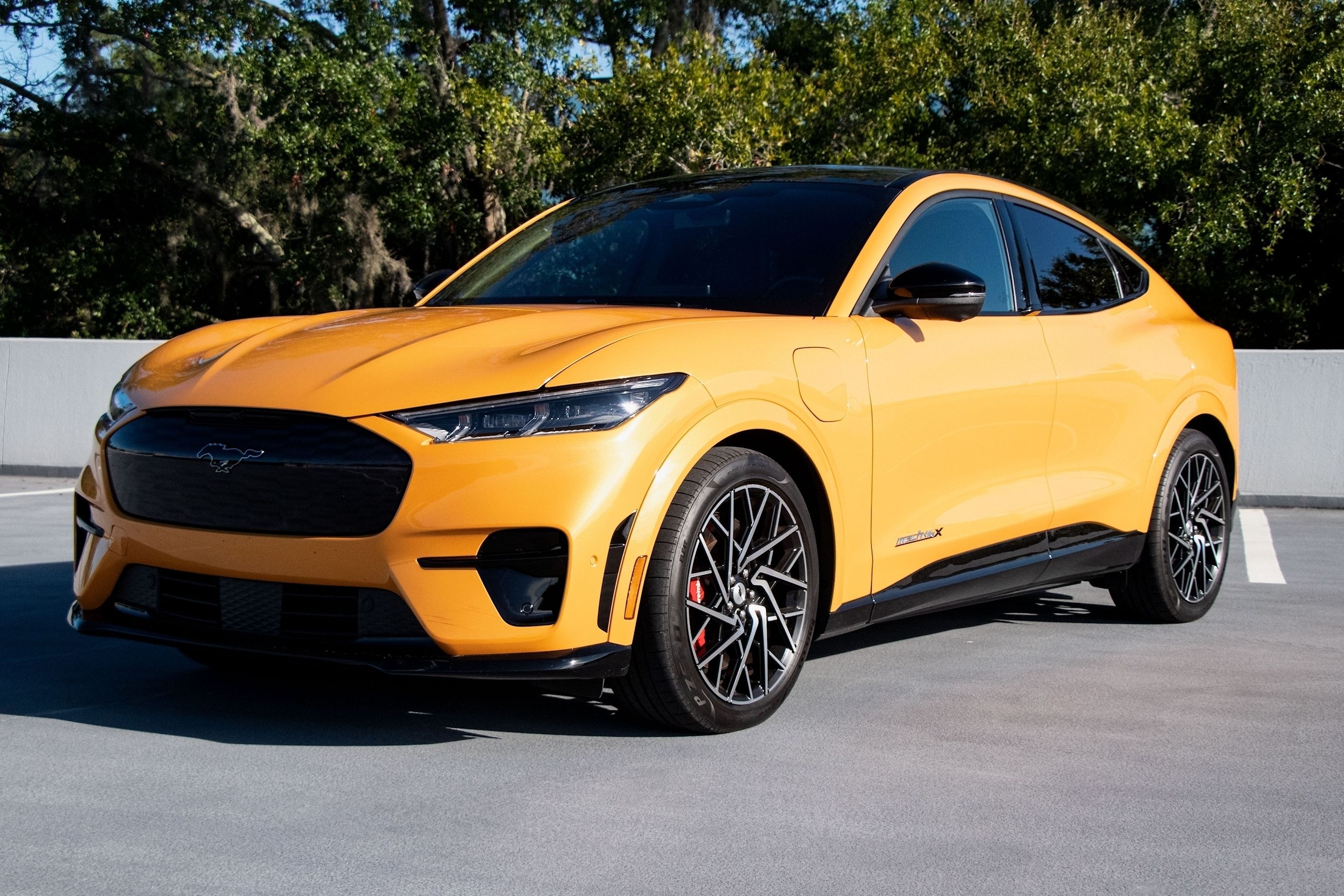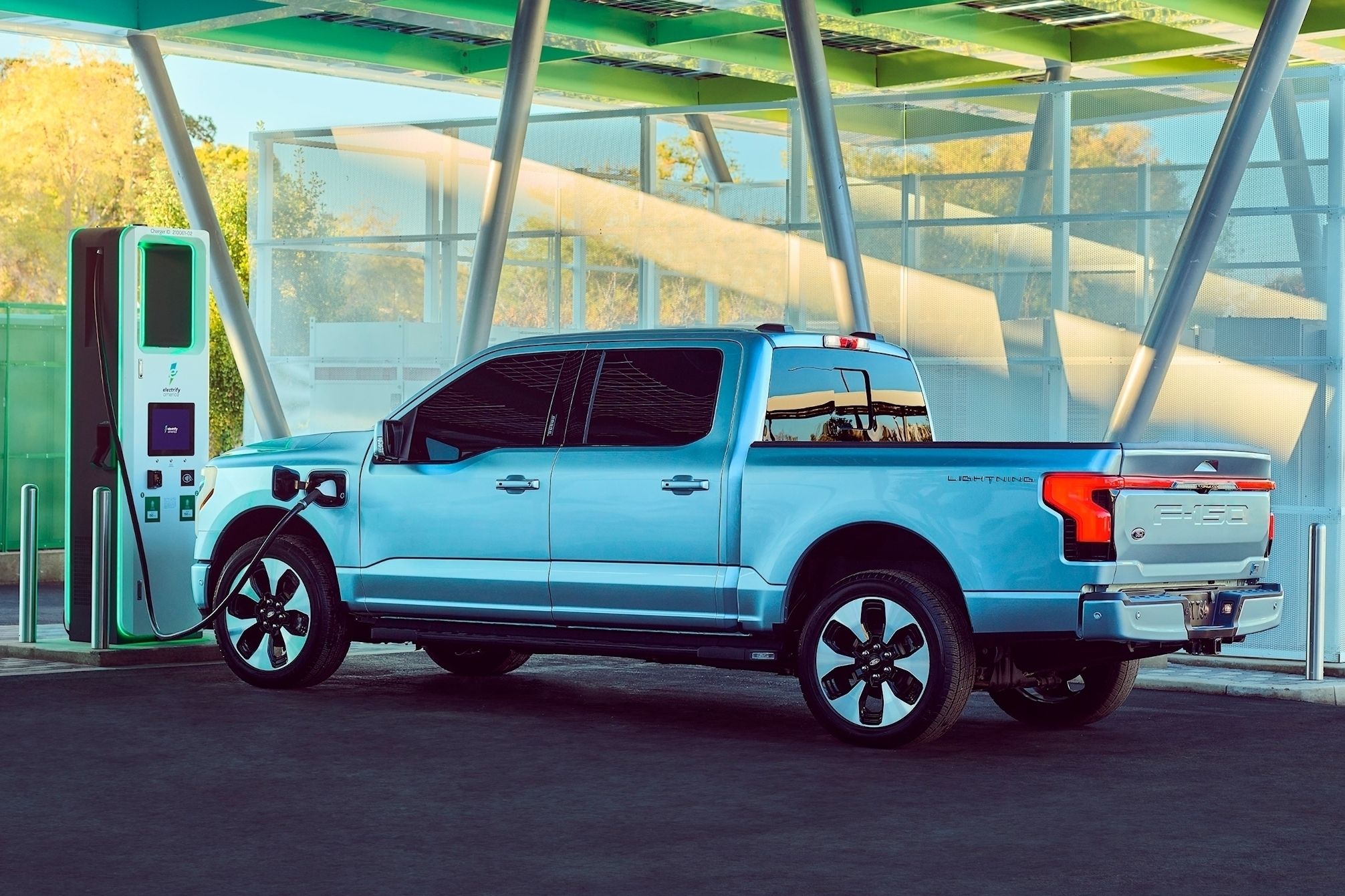
The US Department of Energy (DOE) wants to trash the National Highway Traffic Safety Administration's (NHTSA) current fuel consumption figures for electric vehicles. As reported by Automotive News, this move comes as a direct result of a petition submitted by the Natural Resources Defense Council (NRDC) and Sierra Club, claiming that the petroleum-equivalent fuel consumption values are outdated and not representative.
This new proposal will likely cause an upset in the automotive industry, considering the new fuel economy standards that will come into play in 2027. Automakers rely on electric vehicles to lower their new vehicle fleet fuel efficiency average to avoid fines. In short, the stunning fuel consumption figures of the Ford F-150 Lightning and Mustang Mach-E result in favorable Corporate Average Fuel Economy (CAFE) figures, even with gas guzzlers like the Shelby GT500 and the Super Duty trucks in the range.
But the new proposed petroleum equivalence factor (PEF) for electric vehicles will negatively impact EV fuel consumption figures significantly.
The DEO last updated the PEF for electric vehicles on June 12, 2000. Still, it only became general knowledge when the Environmental Protection Agency (EPA) proposed new fuel economy label stickers for cars in 2010.
"Excessively high imputed fuel economy values for EVs means that a relatively small number of EVs will mathematically guarantee compliance without meaningful improvements in the real-world average fuel economy of automakers' overall fleets," the petition states.
This issue dates back 42 years to April 1981, when the government first decided to study EV consumption. It took the government seven years to come up with a metric and a value, which is how the USA ended up with PEF. It puts electric vehicle consumption into terms the average person can understand by comparing it to a gallon of fuel.
Since the government had almost nothing to work with in the '80s, it effectively thumbsucked a value of 82,049 watt-hours per gallon.
The proposed new PEF will be 23,160 watt-hours (23.16 kWh) per gallon. While the whole world should actually use kWh/100 miles to measure consumption, the government is intent on sticking with a value that compares it to a gallon of fuel.
Ford's F-150 Lightning is a prime example. Under the current CAFE standards, it gets a rating of 238 mpg. Using the proposed 23.16 kWh, that consumption would drop to 67 mpg. That matches perfectly with the EPA-estimated figure of 68 MPGe or 49 kWh/100 miles for those who are interested.
Dropping the Lightning down from 238 mpg to 68 MPGe would significantly impact the Ford fleet's average fuel economy. The goal average mpg the government will implement in 2027 has yet to be announced, but a previous goal in 2021 suggested 52 mpg, up from the 40 mpg at the time.
It's a refreshing change to see the Feds go after EVs for once, considering the numerous bans on internal combustion and billions being spent on charging infrastructure. As the petition rightly states, the current calculation results in the overvaluation of EVs, which is counterproductive to the government's zero-emissions mission.
"This runs counter to the need of the nation to conserve energy, particularly petroleum," said the DOE. "Encouraging adoption of EVs can reduce petroleum consumption but giving too much credit for that adoption can lead to increased net petroleum use because it enables lower fuel economy among conventional vehicles, which represent by far the majority of vehicles sold."
If the DOE gets its way, the proposed changes will come into effect once manufacturers launch 2027 model-year vehicles. If successful, this could be just the catalyst to spur on cheaper EVs and more efficient engines, even if the latter's time in the sun is coming to an end.




